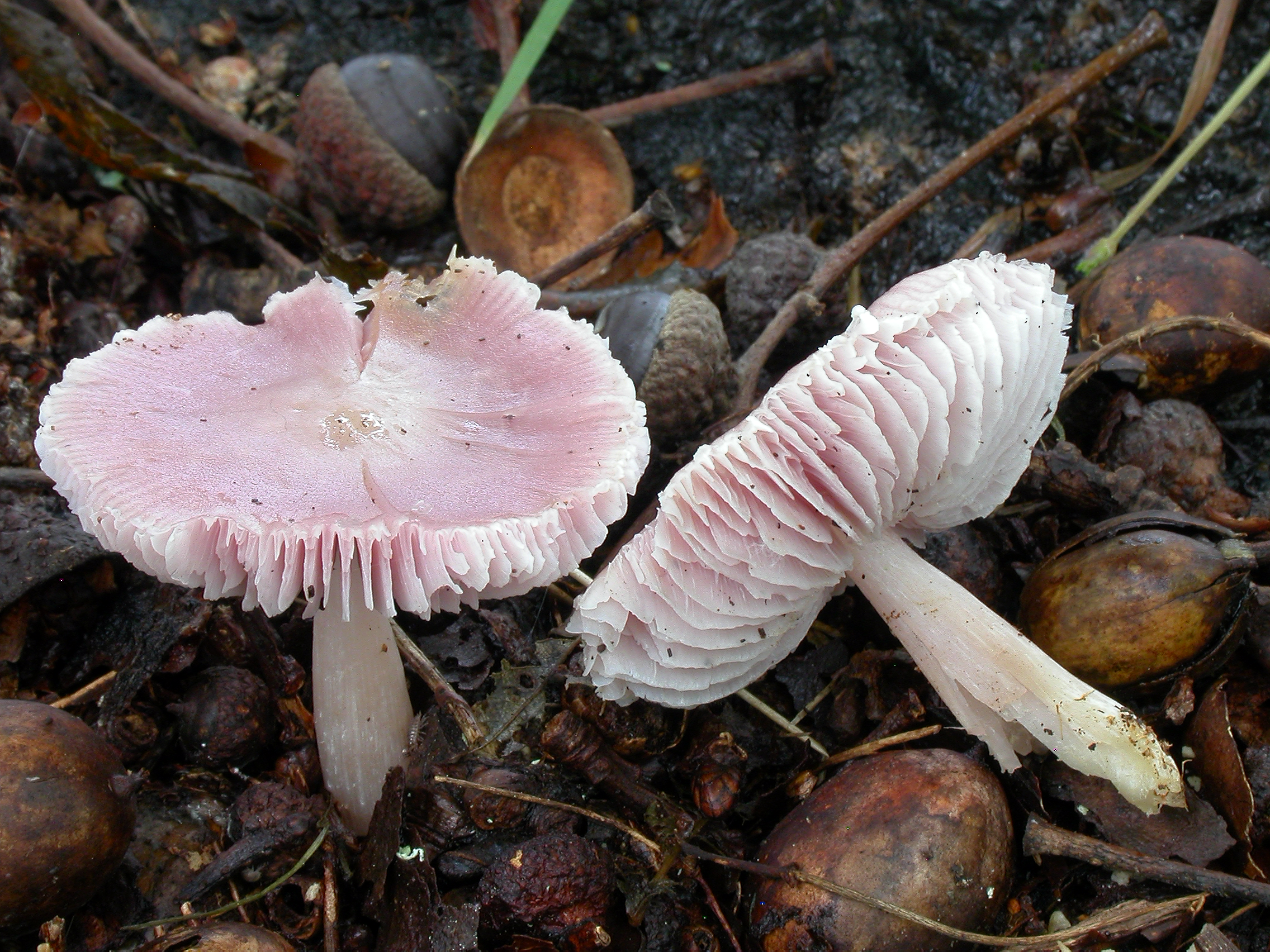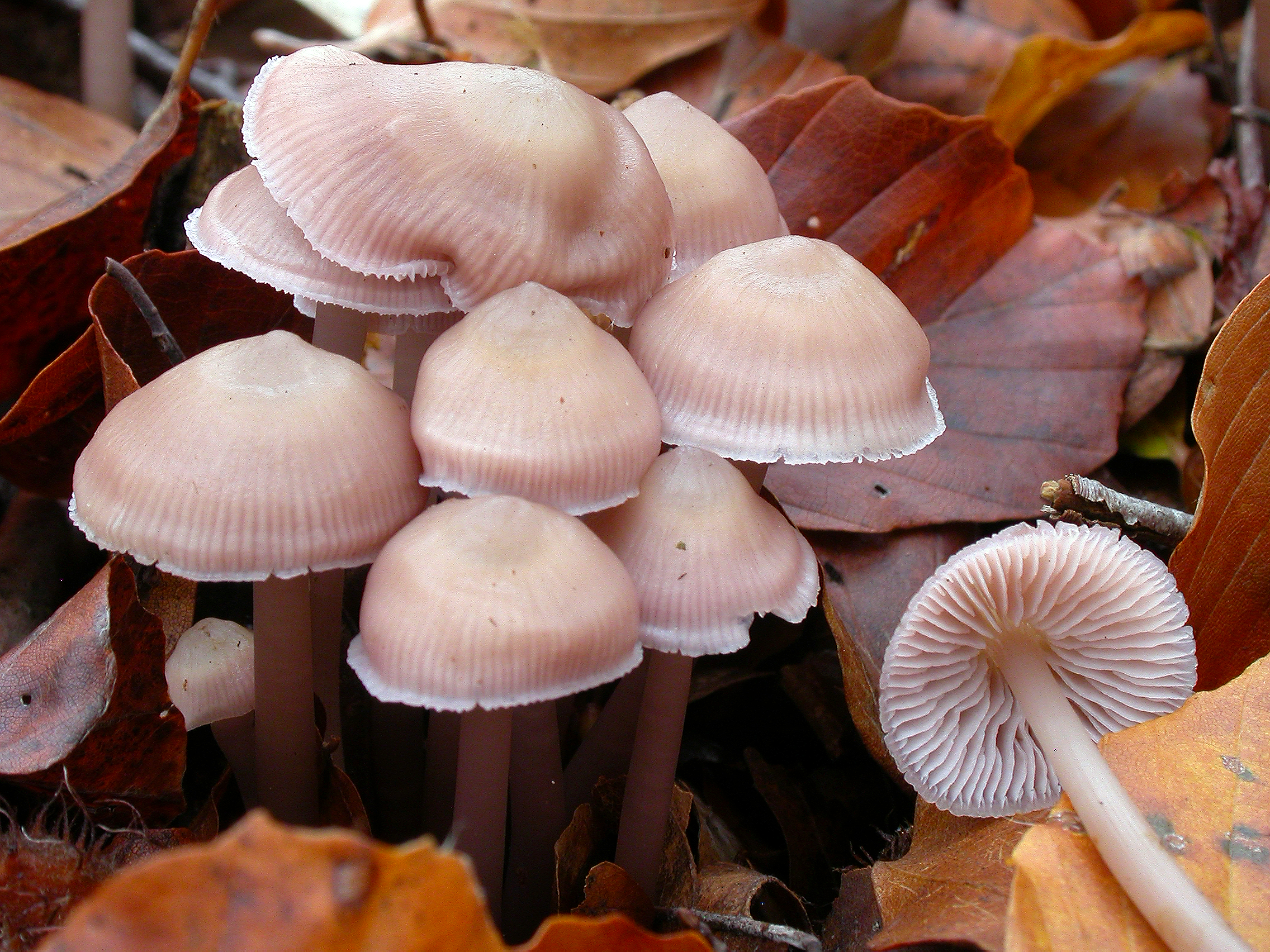Mycena rosea
Mycena rosea
Description
1. Cheilocystidia, 2. Basidium, 3. Spores, 4. Caulocystidia.
Cap 25-60 mm across, convex to plane, more or less with a low umbo, sometimes with a depressed concentric zone, glabrous, "waxy", shallowly sulcate, translucent-striate, hygrophanous, dark to pale pink or lilaceous pink, pallescent with age and turning dingy yellow at the centre. Gills 30-40 reaching the stem, emarginate, dorsally intervenose with age, pink. Stem 60-100 x 4-10 mm, firm, cylindrical, generally widening towards the base, pruinose, innately fibrillose, white or pale pink, often yellowish below, the base more or less densely covered with long, coarse, whitish to yellowish fibrils.. Odour raphanoid. Basidia 29-32 x 6-7 µm, slenderly clavate, 4-spored, with sterigmata up to 5 µm long. Spores 7-8.5 x 4-5 µm, Q = 1.5-1.9; Qav ˜ 1.7, pip-shaped, amyloid. Cheilocystidia 22-55 x 8-18 µm, forming a sterile band, fusiform, clavate or spheropedunculate, short- or long-stalked, smooth. Pleurocystidia similar. Lamellar trama dextrinoid. Hyphae of the pileipellis 1.5-5 µm wide, smooth. Hyphae of the cortical layer of the stem 2-3 µm wide, smooth, caulocystidia 55-160 x 3.5-22.5 µm, fusiform to cylindrical, smooth. Clamps present at all tissues.
Ecology and distribution
Solitary to scattered, preferably under oak and beech, often on calcareous soil. Summer to autumn. Distributed but uncommon in South-Norway.


